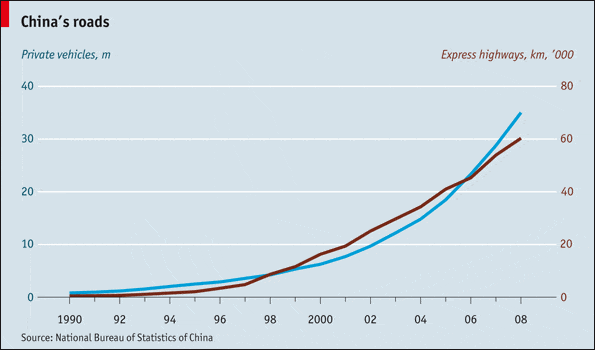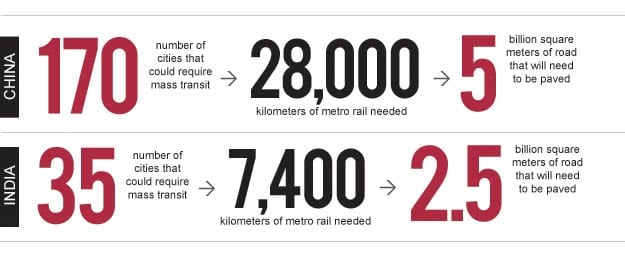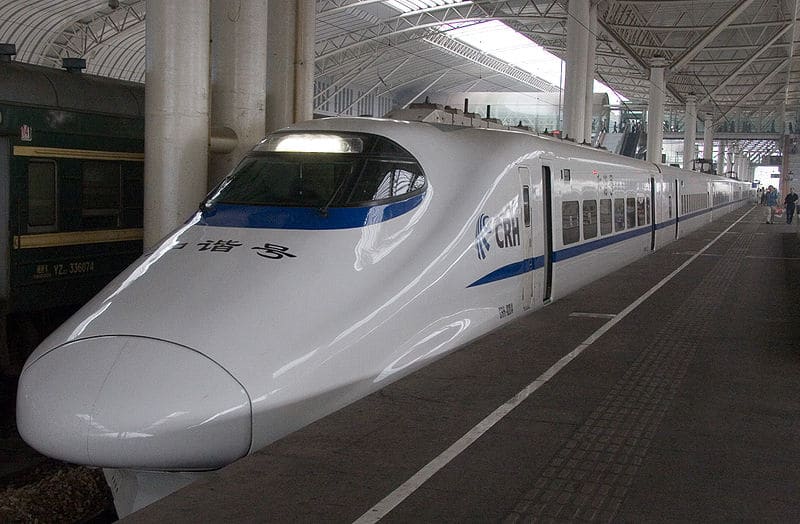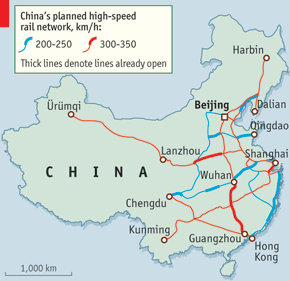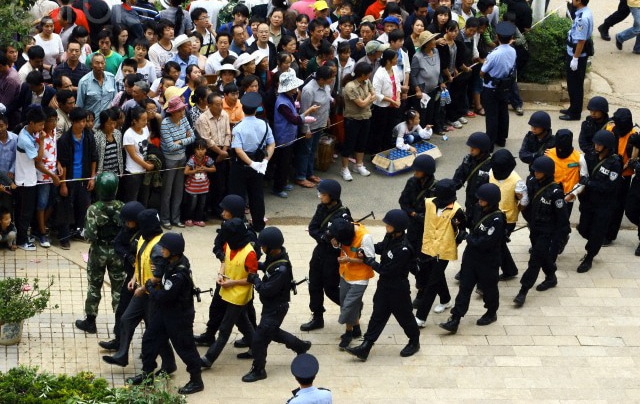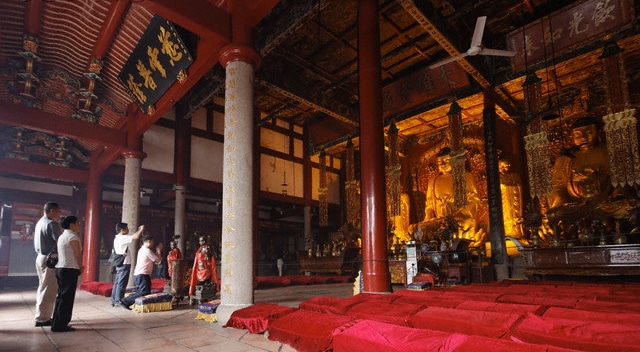China Mike’s 100% verified, no B.S. China facts (interesting & fun statistics):
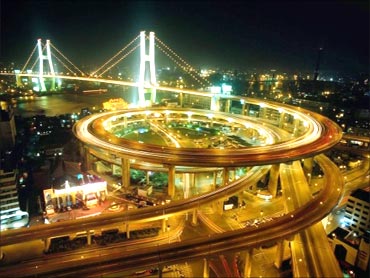
38% of China’s huge 2008-9 economic stimulus package will go towards public infrastructure projects, including railway, road, irrigation, and airport construction. An estimated US$300 billion of the 4 trillion RMB (or US$ 586 billion) will be invested on its high-speed rail network.
[ Wikipedia “Chinese economic stimulus program” ]
China spends about 50% of its GDP on a broad category economists call investment — roads, bridges, trains, ports, technology, factories and office buildings, which is “the highest share in recorded history. During their great booms in the 1960s and ’70s, Japan and South Korea never topped 40 percent. China itself was spending 35 percent only a decade ago.”
[The New York Times “In China, Cultivating the Urge to Splurge” Nov. 24, 2010 ]
China budgeted 80 billion yuan (US$11.8 billion) on transportation infrastructure in 2010. However, China’s rising rate of vehicle ownership has greatly outpaced the growth of the country’s highway system.
[ The Economist online “The Great Crawl of China” August 26, 2010 ]
The August 2010 traffic jam near Beijing was over 100km long and lasted for 11 days.
[ The Economist online “The Great Crawl of China” August 26, 2010 ]
Click here for “Entrepreneurs rent out traffic jam stand-ins” in China Facts: WEIRD & ODDBALL
Shanghai built 1,500 miles of road in the past decade….representing three Manhattan’s worth of streets.
[ Source: National Geographic, FCNY ]
170 new mass-transit systems could be built in China by 2025.
“Up to 170 cities in China could meet planning criteria for mass-transit systems by 2025, more that twice the current number in Europe.”
[ McKinsey & Co. “Preparing for China’s urban billion” March 2009 ]
By 2025, China will pave up to 5 billion square meters of road, in addition to up to 28,000 kilometers of metro rail.
[ McKinsey & Co. “Preparing for China’s urban billion” March 2009 ]
Q: How many people die on Chinese roads every day? Find out at China facts: TRANSPORTATION & EXPLODING CAR CULTURE.
China Facts: RAILROADS & AIRPORTS
China has 46,875 miles of railroads across the country.
[ “China: Asia in Focus”, R. LaFleur 2010]
In October 2010, China unveiled the world’s fastest bullet train. The home-built CRH380 bullet train—connecting Shanghai and Hangzhou—travels 200 km in only 45 minutes.
[ Xinhua News “China unveils Shanghai-Hangzhou high-speed railway; eyes network extension” Oct. 26, 2010 ]
China is planning a high-speed train system that will link London to Beijing…in only 48 hours. Capable of traveling at over 200mph, the new system could make the 5,070-mile trip—which currently takes a week or more and several changes of service–in just two days.
[Daily Mail UK “’New Orient Express’ fast train could get travellers to Beijing from London in two days” March 9, 2010 ]
In 2008, China had only 649 km of high-speed railway. In three years, it now has nearly 8,400 km, which is four times as much as the next-largest network (Japan’s).
[ The Economist “Off the rails?” March 31, 2011 ]
By 2014, China will have about 19,000 km of high-speed railway, which will be ten times as extensive as Japan’s. Estimates for total costs range from US$530 to $750 billion—which is comparable to America’s interstate system, which cost over $400 billion in 2006 dollars.
[ The Economist “Off the rails?” March 31, 2011 ]
China’s new US$4 billion, high-speed line connecting Shanghai to Hangzhou (opened October 2010) only took two years to build.
[ Businessweek “The Year of the Metal Rabbit: China’s High-Speed Rail Network” Feb. 2, 2011 ]
Click here for “China’s high-speed rail head fired for bribes and 18 mistresses” in China facts: GOVERNMENT, MILITARY & CORRUPTION.
By 2030, China will become the world’s second largest airliner market, requiring 4,330 new commercial airplanes valued at $480 billion in the next two decades.
[ Boeing vice-president of commercial aircraft division, Randy Tinseth ]
China is planning on building 97 new airports in 12 years, including a second international airport in Beijing. At the end of 2006, there were 147, including 45 used for both civilian and military purposes. By 2020, that number will grow to a total of 244.
[ 2008 airport development plan, General Administration of Civil Aviation of China (CAAC)]
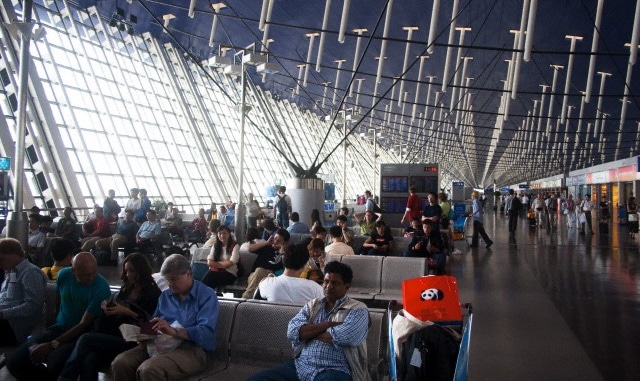
NEXT: China Facts: TRANSPORTATION & NEW CAR CULTURE >>
Return to Facts about China home page

